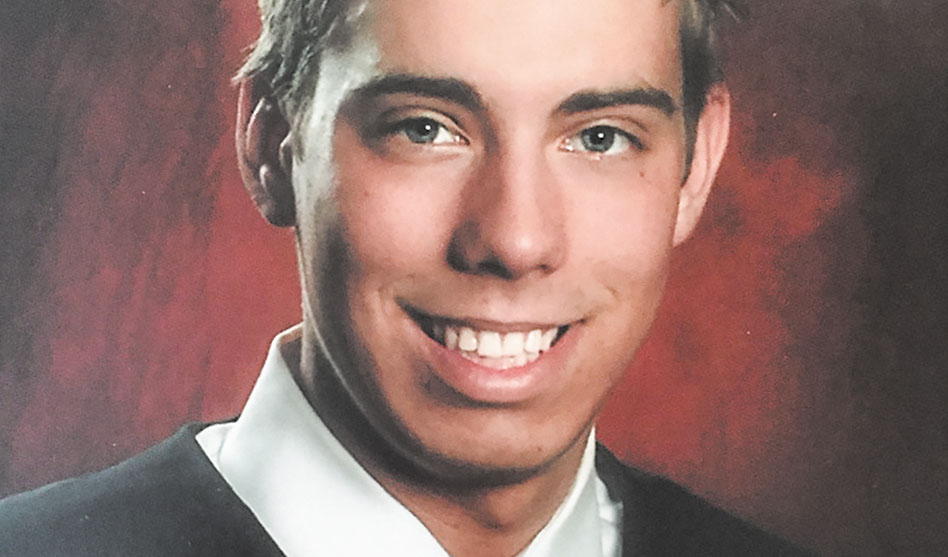Brandon Woodruff
The story of a gay teen convicted of killing his parents despite a lack of evidence will be told by ABC’s ‘20/20’
DAVID TAFFET | Senior Staff Writer
taffet@dallasvoice.com
Dallas Voice has been following the case of Brandon Woodruff — who was convicted in 2009 of killing his parents four years earlier — for years now. Last year the case was picked up by the Innocence Project of Texas, and on Friday, May 20), the story will be told on 20/20 on ABC at 8 p.m. Central Time.
Scott Poggensee is the private investigator who made a film called Texas Justice: Brandon Woodruff. The film details the lack of evidence in the case and suggests that Woodruff, who is gay, was convicted solely based on homophobia.
Poggensee has been championing Woodruff’s case longer than Dallas Voice has been covering it. He’s excited to see how ABC will present the story. “Any attention to the case is good exposure,” he said.
And national exposure is more likely to shed light on how homophobia was at the center of Woodruff’s conviction.
What’s frustrating about the case is that there is no actual evidence tying Woodruff to the murders. The most damning fact, something that the prosecutor repeated over and over to the jury during the trial, was that, just hours after the murders took place, Woodruff was dancing at S4 on Cedar Springs Road.
And, the prosecutor claimed, Woodruff, who was 19 at the time, wasn’t out to his parents.
“If he could lie about being gay, he could lie about killing his parents,” the prosecutor repeated to the jury a number of times through the trial.
In truth, though Woodruff was actually out to his father, who accepted him, although it’s not clear if he was out to his mother yet.
Either way, the actual evidence just doesn’t add up.
Woodruff has said he would be able to prove he was not at his parents’ house at the time of the murder if phone records for the time of the murder had been entered into evidence. His parents were in the middle of moving, and, Woodruff claims, he was at their old house in Heath at the time of the murder.
But apparently no cell phone records exist for several hours during that day. The record stops before the time of the murder and doesn’t start up again until later that night when Woodruff was at S4.
Another fact weighing against the idea of Woodruff having killed his parents is that both his mother and his father were shot and stabbed. That indicates more than one murderer.
For one person to overpower two people with a gun in one hand and a knife in the other is hard to imagine outside of Hollywood crime drama fiction. He’d have to be ambidextrous and skilled with both weapons, as well as extremely strong.
Detectives investigating the crime scene put together a very tight timeline — one that gets Woodruff in and out of his parent’s house in less than 30 minutes so he could get from Royce City over to Dallas, where he picked up a friend before heading down to Oak Lawn.
But there’s a problem with that timeline: The crime scene was bloody. Very bloody. And someone took the time to clean up the bathroom.
Since the bodies weren’t found for a couple of days, someone could have returned to the home to clean it up the next day. But Woodruff was back at school in Abilene the day after the murder.
And coming out of a bloody crime scene, Woodruff would surely have transferred some of that blood into his truck. But investigators, who arrested Woodruff and impounded the truck the same week his parents were murdered, found not a speck of blood on it or inside it.
In addition, no weapon linking Woodruff to the murders has ever been found. At Woodruff’s trial, prosecutors presented a knife, but there was no trace of blood on the weapon and no fingerprints. And the gun used was never found.
Woodruff appealed his conviction to the U.S. Supreme Court in 2019, based on his Sixth Amendment rights because prosecutors had recorded a private jailhouse conversation between him and his attorney prior to his trial.
The judge acknowledged that prosecutors violated Woodruff’s constitutional rights before the trial began but declined to dismiss the capital murder charges.
The Fifth Circuit ruled that he wasn’t harmed by this so he appealed to the Supreme Court. That court refused to hear the case.
An earlier appeal to the Court of Appeals for the Sixth Appellate District in Texarkana on the grounds of insufficient evidence and trial court errors was denied in 2010.
Poggenesee said Woodruff has nothing to hide. He said his goal with his film and his hope for the 20/20 piece is that it will “ultimately help Brandon get out of prison.”












